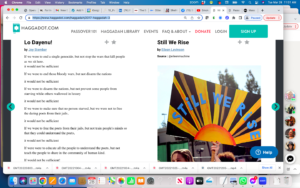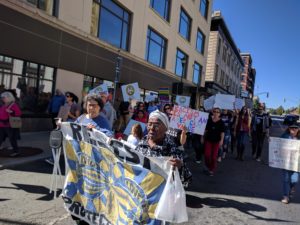How to Start a Community Benefit Social Enterprise From Zero: Five Lessons
A lot of people wonder how to get started with creating a social enterprise: a business that from the beginning is designed to improve lives.

[This post was written a few years ago but left unpublished. I’ve decided it’s still worth sharing because it shows one possible model for starting a new social-benefit company from nothing. I’ve tweaked and updated a few things, but left the chronology and my corespondent’s writing as they were. While I got permission to quote the correspondence, I don’t feel comfortable identifying him or the company.]
Some time back, a Facebook friend in the Philippines asked me for advice on a set of amazing goals. I got his permission to share the relevant parts of our conversation. Since English is not his first language, please cut him some slack on the grammar issues:
I’ve been finished trying to change politics for about 5 years. Focused on poverty and the environment here since then. My company is focused on 3 things right now: 1. Disaster relief during calamities. We earmark 10% to that. 2. Trying to raise a new high school within 5 years. There are two towns nearby that have no high school. Those kids stop their education at grade six and enter poverty. We will need to increase our revenue stream in coming years to do that. 3. Making the entire town solar powered. Not only for the environment, but for the people. You see, the electric bill is actually higher than rent here. For instance, my office manager pays 900 pesos per month for rent and 1600 pesos for electricity. If we could convert much of the country to solar, we could change the entire economy, freeing up much more disposable income for the people. Those are my 3 main focuses. Any ideas to help or partner are always appreciated Shel.
I responded:
Wow, wonderfully ambitious and very people-centered.
First of all, the key to spreading solar is to eliminate the capital expense up front for those with limited resources. So, just as an example (your numbers might vary), you charge 75% of the customer’s current monthly electric bill, allocate 50% of that 75% toward paying off the solar system, and split the other 50% of the 75% into a school fund and a disaster relief fund, both administered by a trusted outside charity that is scrupulously honest and can’t be believably accused of corruption. Since the Philippines is very sunny, it should be easy to convince business people and homeowners to sign up. Renters might be harder, since they would be improving someone else’s building and they’d also need permission from the landlord, but if the economic incentive is sufficient, it should still work out ok. To cover the up-front capital costs, you could look to the utility company, private foundations (including those based outside the Philippines but working in-country), and possibly government funding. And remember that solar isn’t just electricity. Solar hot water has a much faster payback and can be done really cheaply.
Don’t forget that building the buildings is not enough; you also have to fund teachers and staff, textbooks, and other operating costs. Of course, you’ll build green net-zero-energy buildings that are clean and energy self-sufficient—or better still, net-positive energy that feed surplus power back into the system).
Second, I would have better ideas for you if you tell me more about what your company does and give me the URL. If it’s in Tagalog, Google will probably translate, but an English-language page would be better as Google does a very poor job.
And received this reply:
Our company is called <name>. We did obtain our url at <address> but we just have a holding page now under construction. Our company manufactures products that I have designed here in the Philippines. I outsourced the factories…and they will sell mainly as exports to the US.
Im planning on funding the solar equip with company money and writing it all off, so no expenditure to the people. About the High School…yes it must be staffed etc. Luckily, my first cousin is a High School Principal already here. She is ready to take the reins on that project when we become ready.
We are launching our first products now Shel. Mostly through the Hammacher Schlemmer catalog company. Some are launching in October, and others in April 2018. We have some pretty unique, one of a kind products. Our first you can see is a one off, the Recreational Tube in the images. The second phase is a line of innovative wood products…and our 3rd phase comes in 2019. It is a line of coolers and food storage containers that will require capital generated in 2018 for injection molds.
What can you take away from this? Here are five lessons I see—and I bet you can spot a few others:
-
- Think systemically. My friend understood the holistic connection between converting to solar and alleviating poverty–a very important connection when you’re marketing to people at the bottom of the pyramid, in economic terms.
- It helps to be very specific when describing a dream. Make it tangible for yourself and others.
- Know what key pieces you need to have in place before starting, and which you can fill in later.
- Be clear on how to keep capital costs down, especially at first. If you would have to spend huge sums to set up in-house manufacturing, start by contracting it out and avoiding all those capital expenses. Even if you’re a one-person business, there are lots of ways to cut costs. I saw a lot of my competitors in my one-person service business spend lavishly on fancy offices and furniture. I started my business working from home in 1981, and I’m still working from home in 2023–which enabled me to start being profitable at a much lower revenue point.
- Think like your target market—and if your market has little or no disposable income, think about ways to make it affordable to them.
What would you add to this list?


 Check out this
Check out this 






